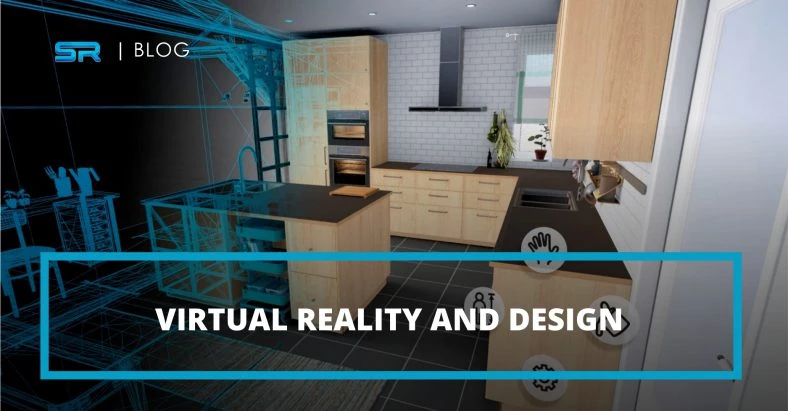Virtual Reality And Design - How Do They Fit Together

VR penetrates deeply into all spheres of human activity. It is actively used as in the entertainment segment so in industrial spheres, as well as in design and architectural constructing. What's easier than to recreate an existing building model in 3D in order to appreciate its beauty and convenience? And if you enter into the landscape the projected structure - you will assess exactly how much it corresponds to the world from the point of view of urban planning. And, of course, virtual reality in architecture is simply created in order to teach architecture apprentices construction and design of buildings in fact in the field on special simulators.
Let's take a closer look at the meaning of virtual reality in design and architecture.
VR has made a techno breakthrough in the visualization of existing or future buildings, allowing realistically to show objects that exist just "on paper". Obviously, no other technique today makes it possible to demonstrate future intentions in the architecture field at the idea stage as attractively as virtual reality in design does.
Some Tips For It
Visualization of the stages of the construction using virtual reality for design is not just clearer than static images or a 3D model, but also more efficiently since virtual reality allows a person to look at an object and to interact with it at once. Let's look at the simple example - lurk over the territory of a country house model in VR, examine and remove parts, change finishing materials, and even look through the wall and see the communication laid. Using virtual reality in architecture design, you can literally "try on" various finishing options. Thanks to the presence effect that occurs in virtual reality, it allows you to realistically see and evaluate all the bright sides of an object, especially its colour, shape, proportion level, texture, and so on. But the abilities in architecture visualization of VR are not limited to this. Even before construction, design errors are identified, which allows to rectify the situation and save a lot while regarding it in the three-dimensional variant via VR means.
In addition to presenting ideas, VR technology is used to create realistic copies of already existing objects (museums, historic buildings, etc.) and to display them with the possibility of interaction. The interactive world of architectural objects is available with the help of special software in vr-glasses and other devices intended for immersion into virtual reality. For example, photogrammetry allows you to create a digital copy of an object using photographs. The technology is used for quick visualization of construction, cultural heritage sites, helps to assess progress in the intermediate stages of construction work or on complex restoration projects and in hard-to-reach areas. The accuracy of digital copies reaches 1-2 centimetres. For example, today such a model will be used to reconstruct the roof and spire of a burnt down Notre Dame de Paris cathedral in order to thoroughly restore the fragile Gothic architecture.
How to Use It On Practice?
There are several ways of how to use it just today in architectural bureau's practice:
- Visualization of private interiors, as an element of the working draft;
- Visualization of architectural properties, as a tool to stimulate sales;
- Packaging projects for architectural competitions, primary presentations;
- Virtual reality for social / public architectural sites as a tool for open presentations;
- Virtual reality as a tool for monitoring the construction process.
And the biggest corporation involved in the building process and architectural researches are using those abilities already. So why doesn't it still widespread everywhere?
What prevents the massive use of virtual reality in the architectural field? Too expensive infrastructure. But today the cost of it can be significantly reduced, if you use the technology VDI for the development of 3D-content. Instead of purchasing their own graphics capabilities, architectural bureaus in a number of scenarios can consume them remotely - the largest manufacturers, such as the Dell EMC, have already achieved significant success in this direction. New possibilities in architecture projecting and constructing are already available, and now is the right time to use them to gain advantages over competitors, to open new horizons for the development of the company, both technically and creatively.

